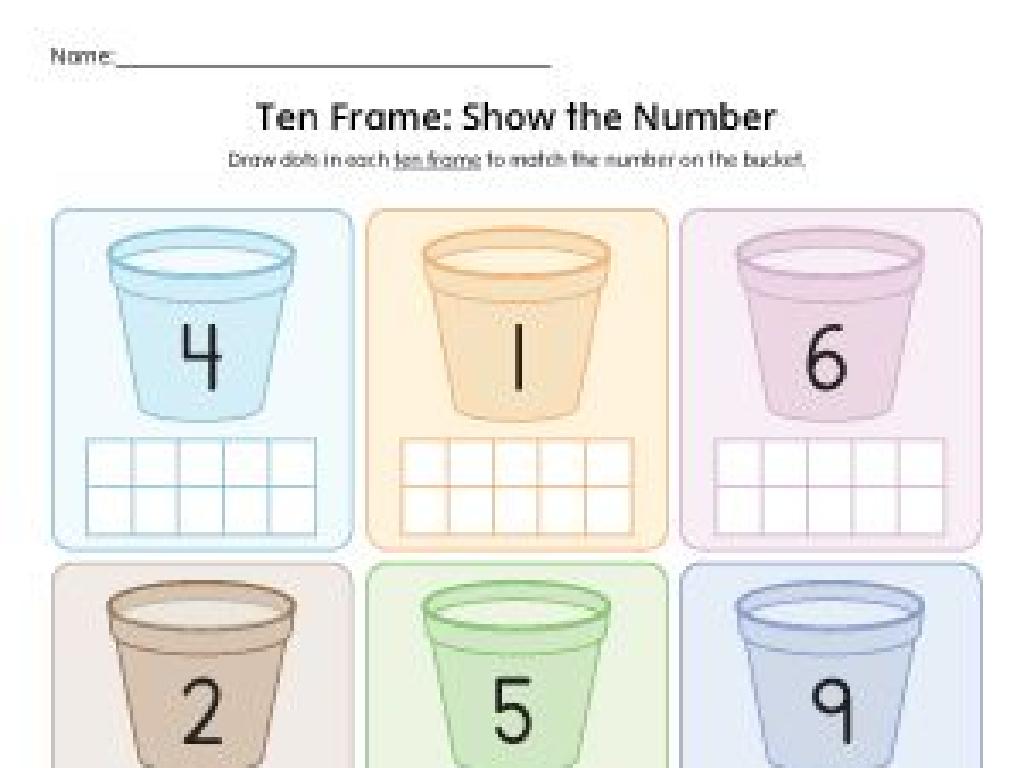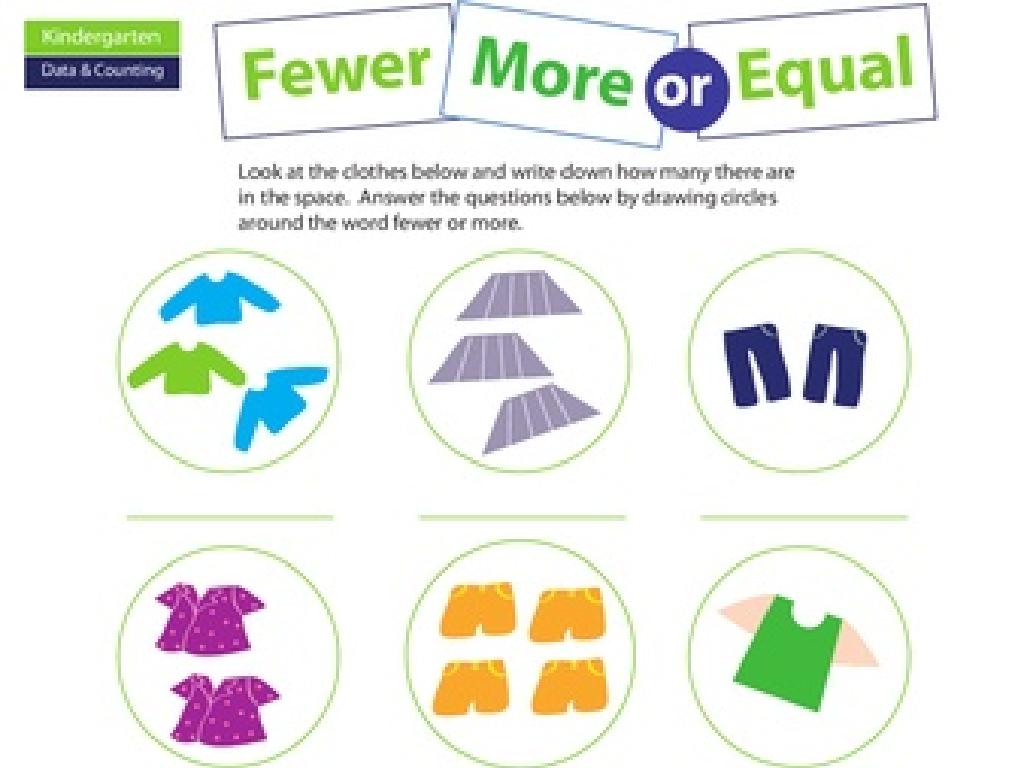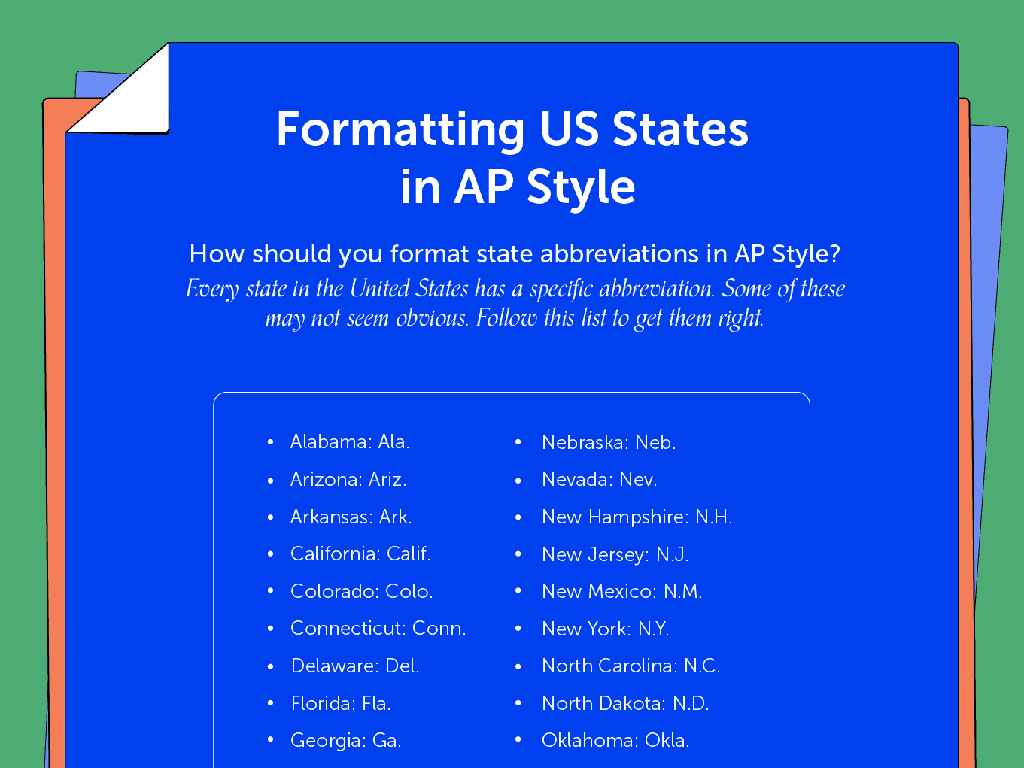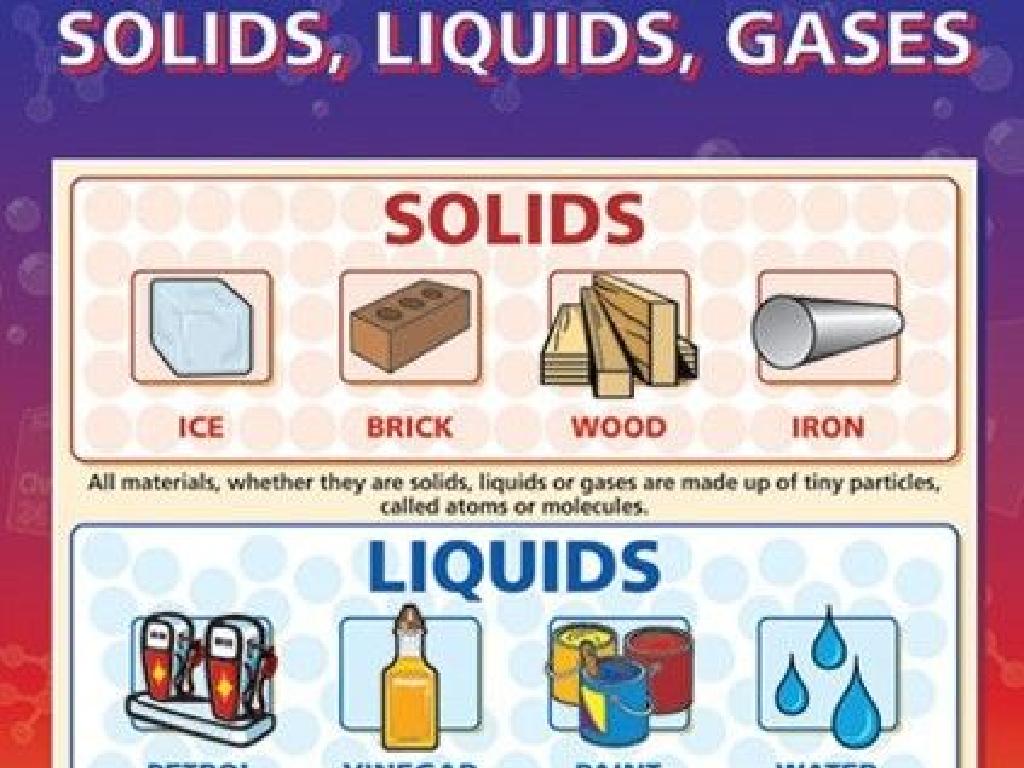Area Of Triangles And Trapezoids
Subject: Math
Grade: Seventh grade
Topic: Perimeter And Area
Please LOG IN to download the presentation. Access is available to registered users only.
View More Content
Exploring Area: Triangles & Trapezoids
– Perimeter vs. Area: A Recap
– Perimeter: Sum of all sides
– Add up the lengths of all the sides of a shape
– Area of Triangles: 1/2 * base * height
– For a triangle with a base of 6 units and height of 4 units, Area = 1/2 * 6 * 4
– Area of Trapezoids: 1/2 * (base1 + base2) * height
– If a trapezoid has bases of 5 and 7 units, and height of 3 units, Area = 1/2 * (5+7) * 3
|
Begin with a brief review of perimeter and area to solidify the students’ understanding of these foundational concepts. Emphasize that perimeter is the measure around a shape, while area represents the space within it. Transition to the day’s focus by introducing the formulas for the area of triangles and trapezoids. Provide clear examples for each, using simple numbers that are easy for seventh graders to calculate. Encourage students to visualize by drawing the shapes and labeling the bases and heights. This will prepare them for hands-on activities where they will practice calculating the area of these shapes.
Calculating the Area of a Triangle
– Triangle area formula
– Area = 1/2 x base x height
– Identifying base and height
– Base is one side, height is perpendicular
– Example: 5 cm base, 3 cm height
– Area = 1/2 x 5 cm x 3 cm = 7.5 cm²
– Practice with different triangles
|
Introduce the formula for the area of a triangle and emphasize the importance of identifying the base and the height correctly, as they are essential in calculating the area. The base can be any side of the triangle, and the height must be perpendicular to it. Use the example provided to show a practical application of the formula. Encourage students to practice with triangles of various orientations to become comfortable with identifying the base and height in different scenarios. Provide additional practice problems for students to solve, ensuring they understand the concept thoroughly.
Calculating Triangle Area
– Triangle area formula: A = 1/2 * base * height
– Example: base = 8 in, height = 4 in
– A triangle with an 8-inch base and 4-inch height
– Calculate area: A = 1/2 * 8 * 4
– Area calculation: A = 1/2 * 8 * 4 = 16 square inches
– Discuss height’s effect on area
– If height increases, area grows; if height decreases, area shrinks
|
This slide is designed for a class activity where students will apply the formula for the area of a triangle to a specific example. Start by reviewing the formula for the area of a triangle. Then, present the example with a base of 8 inches and a height of 4 inches. Work through the calculation as a class to find the area. Afterward, engage the class in a discussion about how changing the height while keeping the base constant affects the area of the triangle. This will help students understand the relationship between the dimensions of a shape and its area. Possible activities include having students draw triangles of different heights and calculate their areas, or comparing the areas of triangles with the same base but different heights.
Calculating the Area of a Trapezoid
– Trapezoid area formula
– Area = 1/2 x (base1 + base2) x height
– Identifying bases and height
– Base1 and base2 are parallel sides, height is perpendicular distance
– Example: Area calculation
– With bases 6 cm, 4 cm and height 3 cm, Area = 1/2 x (6+4) x 3
|
Introduce the formula for finding the area of a trapezoid and ensure students understand each component of the formula. Explain that the bases are the two parallel sides of the trapezoid and the height is the perpendicular distance between them. Use a clear example to demonstrate the calculation process. For instance, with bases of 6 cm and 4 cm, and a height of 3 cm, the area is calculated as 1/2 x (6+4) x 3 = 1/2 x 10 x 3 = 15 cm². Encourage students to practice with different measurements and to draw their own trapezoids to apply the formula.
Calculating Area of a Trapezoid
– Trapezoid area formula: A = (b1 + b2) / 2 × h
– Given: b1 = 10 inches, b2 = 7 inches, h = 5 inches
– Calculate area with given measurements
– Plug values into formula: A = (10 + 7) / 2 × 5
– Discuss base lengths’ effect on area
– Longer bases increase area, shorter bases decrease area
|
This slide is a practice problem to help students apply the formula for the area of a trapezoid. Start by reviewing the formula where A is the area, b1 and b2 are the lengths of the bases, and h is the height. Work through the given example by substitizing the provided measurements into the formula. After calculating the area, engage the class in a discussion about how changing the lengths of the bases while keeping the height constant affects the area of the trapezoid. This will help students understand the relationship between the dimensions of a shape and its area. Encourage students to think critically about the formula and how each component influences the result.
Real-World Application: Triangles & Trapezoids
– Triangles in real life
– Structures like roofs, bridges, and pyramids
– Trapezoids around us
– Objects like tables, handbags, and artworks
– Calculating area’s importance
– Used in architecture, engineering, and design
– Activity: Find examples
|
This slide aims to connect the mathematical concepts of triangles and trapezoids to the real world, showing students the practical applications of calculating area. Students should recognize triangles in structures that require stability, such as bridges and roofs, and trapezoids in everyday objects like tables or even in art. Understanding how to calculate the area is crucial in fields like architecture, engineering, and design, where precise measurements are necessary for creating functional and safe spaces. The activity encourages students to observe their surroundings and identify these shapes, reinforcing their learning through real-life connections. Teachers should prepare to facilitate a discussion where students can share their findings and reflect on the importance of geometry in everyday life.
Class Activity: Exploring Area with Shapes
– Form groups and create shapes
– Calculate areas on graph paper
– Use the formulas: Area of triangle = 1/2 * base * height, Area of trapezoid = 1/2 * (base1 + base2) * height
– Discuss area calculation methods
– How did you determine the base and height?
– Present findings to the class
|
This group activity is designed to provide hands-on experience with calculating the area of triangles and trapezoids. Provide each group with graph paper and have them create various triangles and trapezoids. They should then use the appropriate formulas to calculate the area of each shape they’ve created. Encourage students to discuss how they determine what constitutes the base and height in different orientations. After calculations, each group will present their shapes and explain their process for finding the area. This will help reinforce their understanding and allow them to learn from each other’s methods. Possible variations for different groups could include using different units of measurement, creating shapes with specific area constraints, or comparing the areas of similar shapes with different dimensions.
Wrapping Up: Area of Triangles & Trapezoids
– Recap: Area of triangles
Area = 1/2 * base * height
– Recap: Area of trapezoids
Area = 1/2 * (base1 + base2) * height
– Homework: Practice worksheet
Solve problems on areas using the formulas
– Reminder: Consistent practice
Regular practice is key to mastering the concepts
|
As we conclude today’s lesson, remember that the area of a triangle is found using the formula 1/2 * base * height, and for a trapezoid, it’s 1/2 * (base1 + base2) * height. The homework worksheet includes a variety of problems to reinforce these formulas and help students practice calculating the area of these shapes. Encourage students to complete the worksheet and remind them that consistent practice is essential for understanding and remembering how to find the area of triangles and trapezoids. Next class, we’ll review the homework answers and clarify any doubts.






